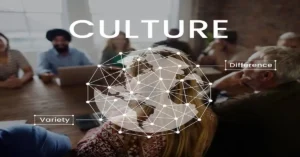What is 247 Gaming?
247 gaming, or “24/7 gaming,” refers to the always-available, continuous nature of gameplay across digital platforms. This trend represents more than just around-the-clock access—it is a profound shift in how games are designed, how players interact with them, and how our digital lives adapt to real-time entertainment. In 2025, this term goes beyond marathon sessions; it speaks to persistent game worlds, live-service economies, and personalized engagement that never truly pauses. If you’re wondering what 247 gaming means and why it matters now more than ever, this article explains it all—from the infrastructure to the psychology behind it.
Defining 247 Gaming in 2025
The term 247 gaming does not just refer to players who game all day. Rather, it encapsulates a system where games are always live, always updating, and always accessible regardless of time zone. This includes online multiplayer titles, mobile apps with global servers, and platforms like cloud-based gaming that remove physical and regional constraints.
Today, games are often structured with real-time events, seasonal cycles, timed rewards, and global competitions that push engagement around the clock. Players can log in from anywhere, anytime, and find the game world still evolving.
Why Gaming Never Stops Anymore
Several key forces have led to the normalization of 247 gaming:
- Globalized audiences mean players are active at all hours
- Mobile technology ensures games are accessible wherever you are
- Live-service models keep content flowing weekly or daily
- In-game economies encourage daily check-ins and reward loops
For developers, an always-on game keeps engagement high and revenue steady. For players, it promises immediacy and immersion without end.
Infrastructure: Servers, Clouds, and Persistent Worlds
The backbone of 247 gaming is its infrastructure. Modern titles operate on dedicated cloud-based servers, often hosted by services like AWS, Azure, or proprietary systems.
Here’s a breakdown of the major infrastructure components:
| Component | Role in 247 Gaming |
|---|---|
| Cloud Servers | Keep games online 24/7 with global load-balancing |
| Edge Computing | Reduces latency for mobile and remote users |
| Persistent Worlds | Game state evolves even when players log off |
| Auto-Scaling Systems | Adjusts resource usage based on traffic volume |
| Cross-Platform Sync | Maintains continuity across devices |
This infrastructure ensures that gameplay isn’t limited by location, hardware, or even local time.
The Rise of Live-Service Game Models
Unlike standalone games with finite storylines, live-service games like Fortnite, Destiny 2, or Genshin Impact operate more like social platforms or TV series—constantly refreshed and extended.
Key features of live-service models include:
- Seasonal content drops
- Time-limited events
- Daily or weekly challenges
- Dynamic player-versus-environment (PvE) systems
This model encourages habitual play and fosters “FOMO” (Fear of Missing Out), leading users to engage continuously to avoid falling behind.
How Player Behavior Has Changed
In the era of 247 gaming, players are no longer confined to peak hours or weekends. Behavior patterns have evolved to accommodate constant availability:
- Shorter, more frequent sessions (5–20 minutes)
- Micro-engagements on mobile throughout the day
- Multiscreen gaming, where players keep games running passively
- “Check-in culture”, driven by daily login rewards or missions
Gamers now structure their schedules around gaming loops—not the other way around.
The Psychology of Constant Engagement
Always-available games exploit psychological triggers in sophisticated ways:
- Variable reward systems, which trigger dopamine release
- Social reciprocity, where guilds and clans depend on participation
- Streak mechanics, encouraging users not to break a cycle
- Digital identity reinforcement, where characters evolve only with time investment
This turns gaming into a daily habit, more akin to checking social media than traditional leisure.
Economic Ecosystems in 247 Games
Modern 247 games feature full-fledged economies. Many function on dual-currency systems—one earned through gameplay, the other bought with real money.
Features of 247 game economies:
- In-game shops restocked daily
- Time-gated content requiring multiple sessions
- Subscription passes for seasonal benefits
- Auction houses or player-to-player markets
In some blockchain-based 247 games, items can be owned, traded, or even staked like assets—blurring the line between playing and investing.
Impact on Developers and Studios
Developing a 247 game is not a “release-and-forget” model. It requires:
- Live operations teams, active 24/7
- Community managers to moderate and engage globally
- Content pipeline specialists to maintain a constant flow of updates
- Analytics teams tracking player behavior minute-by-minute
This shift has changed how games are staffed, funded, and sustained—leading to new job roles and operational rhythms.
Cultural and Social Shifts in 247 Gaming
Gaming has evolved from a niche hobby to a social medium, and 247 gaming is central to that shift. Features like voice chat, real-time matchmaking, and shared online hubs create environments where players:
- Form lasting friendships
- Build virtual communities
- Engage in real-time storytelling
- Compete globally at any hour
These platforms become alternative social networks, often replacing traditional digital forums or even in-person meetups.
Is 247 Gaming a Healthy Model?
There’s ongoing debate about the health implications of 247 gaming. On one hand, accessibility and community have empowered neurodivergent users, remote players, and international friendships. On the other, the model may encourage compulsive behaviors.
Key concerns include:
- Disrupted sleep patterns
- Diminished attention spans
- Reduced offline socialization
- Exposure to exploitative microtransactions
Experts advocate for designing mindful play mechanics—like session limits, break reminders, and mental wellness check-ins.
Balancing Accessibility and Addiction
Game developers today face a delicate balance: making games engaging but not overwhelming. Best practices for ethical 247 design include:
- Soft caps on progress to prevent burnout
- Transparent monetization models
- Parental controls and time tracking
- Scheduled downtime for maintenance and community breaks
The best 247 games are those that prioritize long-term player health over short-term profits.
The Role of AI in Maintaining 24/7 Worlds
Artificial Intelligence plays an increasingly important role in sustaining 247 games:
- Procedural content generation, allowing infinite variety
- AI moderators, detecting toxicity or harmful behavior
- Dynamic NPC behavior, adapting to player actions
- Predictive analytics, tuning content to player preferences
In essence, AI keeps the world alive when human developers are offline, ensuring players always have something new to encounter.
What’s Next for the Industry?
As we move into a hyper-connected future, 247 gaming will evolve to integrate:
- Wearable tech (smart glasses, haptic suits)
- AR/VR layers that blur physical and digital play
- Voice-first interfaces, letting players interact naturally
- Cross-world interoperability, where assets move between games
Eventually, 247 gaming will not just mean “always on,” but “always around”—a background layer to digital life itself.
Conclusion
247 gaming is not just a trend—it’s a transformation. It redefines what it means to play, when we play, and even why we play. With constant access, evolving worlds, and personalized experiences, it reflects both the possibilities and pressures of the digital age. As developers, players, and policymakers navigate this new landscape, the challenge will be crafting systems that are as humane as they are engaging. Because in a world where the game never sleeps, the question isn’t just how we play—but how we live alongside it.
ALSO READ: Braip: Understanding the Rise of a Digital Product Marketplace
Frequently Asked Questions (FAQs)
Q1: What exactly does ‘247 gaming’ mean?
247 gaming refers to games and systems that are available to play at any time, maintained by persistent servers and real-time updates.
Q2: Are all games now 247 games?
No, but a growing number of mobile, online, and live-service games use this model, especially those focused on multiplayer or seasonal content.
Q3: Does 247 gaming require a constant internet connection?
Usually yes, as most 247 titles rely on cloud-based servers or real-time features that need continuous connectivity.
Q4: Is 247 gaming harmful to mental health?
It can be if unmoderated. The continuous access and engagement loops can lead to compulsive behavior if not balanced with offline life.
Q5: What’s the benefit of 247 gaming for developers?
It provides sustained user engagement, recurring revenue through microtransactions or subscriptions, and real-time feedback for iterative improvements.









